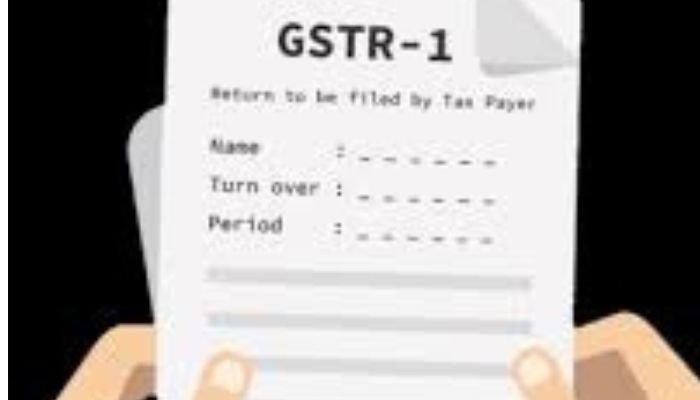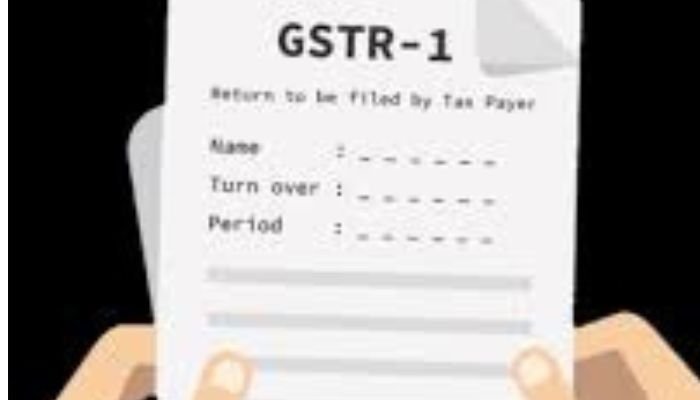In a much-anticipated move, the Goods and Services Tax Network (GSTN) recently unveiled Advisory No. 621 on January 15, 2023, shedding light on the introduction of Tables 14 and 15 in GSTR-1. This advisory serves as a crucial roadmap for businesses navigating the intricate landscape of GST compliance. Let's delve into the key aspects outlined in this directive and understand how these tables are set to reshape the reporting framework.
| Table Section |
| 1. Introduction |
| 2. Purpose and Applicability |
| 3. Crucial Highlights of Tables 14 & 15: |
| 4. Amendments and Auto-population: |
| 5. Step-by-Step Reporting Guide: |
| 6. Introduction of ECO-Documents in GSTR-2B: |
| 7. FAQs |
Purpose and Applicability:
The primary objective of this advisory is to bring to the forefront the newly introduced Tables 14 and 15 in FORM GSTR-1 and IFF. These tables specifically target businesses engaged in e-commerce operations or those obligated to pay tax under Section 9(5) of the GST Act. By streamlining reporting processes, the GSTN aims to enhance transparency and compliance in the ever-evolving tax landscape.

Crucial Highlights of Tables 14 & 15:
-
Table 14: Supplier's Reporting
- 14(a): Suppliers are now required to furnish details of supplies made through e-commerce operators, where operators are liable to collect tax (TCS).
- 14(b): Suppliers must report details of supplies through e-commerce operators where the operators are liable to pay tax under Section 9(5).
2. Table 15: E-Commerce Operator's Reporting
- B2B: Detailed information on supplies where both supplier and recipient are registered.
- B2C: Supplier-level details for supplies from a registered supplier to an unregistered recipient.
- URP2B: Document-level details for supplies from an unregistered supplier to a registered recipient.
- URP2C: POS and rate-wise details for supplies from an unregistered supplier to an unregistered recipient.
Amendments and Auto-population:
- The directive emphasizes the importance of reporting amendments in designated sections for both Tables 14 and 15.
- To streamline reporting, taxable values and tax liabilities will be auto-populated in GSTR-3B.
Step-by-Step Reporting Guide:
- Navigate to the Returns Dashboard and select the relevant period for GSTR-1.
- Access Tables 14(a) & 14(b) by clicking on the tabs dedicated to TCS and tax under Section 9(5).
- Utilize the various tabs in Table 15 for reporting different transaction types (B2B, B2C, URP2B, URP2C).
- After adding records, follow the existing process to file GSTR-1 seamlessly.
Introduction of ECO-Documents in GSTR-2B:
- Businesses now have the facility to pass input tax credit (ITC) to registered recipients.
- Values will be auto-populated from Table 15 to the newly introduced "ECO-Documents" table in GSTR-2B.
- Easily access the "ECO-Documents" table from the Returns Dashboard for a comprehensive overview.
(FAQs)
Q1: What is the purpose behind introducing Tables 14 and 15 in GSTR-1?
- A1: The introduction of Tables 14 and 15 in GSTR-1 serves the purpose of capturing detailed information about supplies made through e-commerce operators. These tables are specifically designed for businesses engaged in e-commerce operations or those obligated to pay tax under Section 9(5) of the GST Act.
Q2: When did GSTN issue Advisory No. 621, and when did the new tables become live on the GST common portal?
- A2: Advisory No. 621 was issued by GSTN on January 15, 2023. The new Tables 14 and 15 became live on the GST common portal from January 2024 tax periods onwards.
Q3: Which taxpayers are affected by the introduction of Tables 14 and 15?
- A3: Tables 14 and 15 are relevant for taxpayers who either supply through E-Commerce operators (ECO) or are themselves liable to pay tax under Section 9(5) of the GST Act.
Q4: What details are reported in Table 14(a) of GSTR-1?
- A4: In Table 14(a), suppliers report details of supplies made through e-commerce operators on which operators are liable to collect tax (TCS).
Q5: How can taxpayers access Table 15 for reporting different transaction types?
- A5: Taxpayers can access the various tabs in Table 15 for reporting different transaction types (B2B, B2C, URP2B, URP2C) by navigating to the Returns Dashboard, selecting the relevant period for GSTR-1, and following the prompts.
Q6: What is the significance of the "ECO-Documents" table introduced in GSTR-2B?
- A6: The "ECO-Documents" table in GSTR-2B allows businesses to pass input tax credit (ITC) to registered recipients. Values are auto-populated from Table 15, providing a comprehensive view of the supplies received through e-commerce operators on which the operator is liable to pay tax under Section 9(5).
Q7: Are there any auto-population features for taxable values and tax liabilities in GSTR-3B?
- A7: Yes, taxable values and tax liabilities from Tables 14 and 15 are auto-populated in GSTR-3B, streamlining the reporting process for businesses.
Q8: What should e-commerce operators do if e-invoices for 9(5) supplies are not auto-populated in Table 15?
- A8: E-commerce operators are advised to examine and manually add such records related to 9(5) supplies in Table 15.
Q9: How can taxpayers view the "ECO-Documents" table in GSTR-2B?
- A9: Taxpayers can view the "ECO-Documents" table in GSTR-2B by navigating to the Returns Dashboard, selecting the relevant period for Auto-drafted ITC Statement, and clicking on the "View" option.
Q10: What is the significance of reporting amendments in Tables 14 and 15?
- A10: Amendments for Tables 14 and 15 should be reported in designated sections to ensure accurate and up-to-date information is reflected in the GST filing.
As businesses strive to stay abreast of the ever-changing GST landscape, the introduction of Tables 14 and 15 marks a significant leap towards a more transparent and efficient reporting system. Adhering to the reporting steps outlined in this directive ensures that businesses can seamlessly adapt to the new framework while maintaining compliance. Keep a close eye on further updates from GSTN, and embrace these changes to usher in a new era of GST reporting. Stay compliant, stay informed.
एक बहुप्रतीक्षित कदम में, वस्तु एवं सेवा कर नेटवर्क (जीएसटीएन) ने हाल ही में 15 जनवरी, 2023 को एडवाइजरी नंबर 621 का अनावरण किया, जिसमें जीएसटीआर-1 में तालिका 14 और 15 की शुरूआत पर प्रकाश डाला गया। यह सलाह जीएसटी अनुपालन के जटिल परिदृश्य से निपटने वाले व्यवसायों के लिए एक महत्वपूर्ण रोडमैप के रूप में कार्य करती है। आइए इस निर्देश में उल्लिखित प्रमुख पहलुओं पर गौर करें और समझें कि रिपोर्टिंग ढांचे को नया आकार देने के लिए ये तालिकाएँ कैसे सेट की जाती हैं।
| खंड |
| 1. परिचय |
| 2. उद्देश्य और प्रयोजन |
| 3. तालिका 14 और 15 की महत्वपूर्ण अंशों का संक्षेप |
| 4. संशोधन और स्वचालन |
| 5. कदम-से-कदम रिपोर्टिंग गाइड |
| 6. जीएसटीआर-2बी में ईसीओ-दस्तावेजों का परिचय |
| 7. पूछे जाने वाले प्रश्न(FAQs) |
उद्देश्य और प्रयोज्यता:
इस सलाह का प्राथमिक उद्देश्य फॉर्म जीएसटीआर-1 और आईएफएफ में नई शुरू की गई तालिका 14 और 15 को सामने लाना है। ये तालिकाएँ विशेष रूप से ई-कॉमर्स संचालन में लगे व्यवसायों या जीएसटी अधिनियम की धारा 9(5) के तहत कर का भुगतान करने के लिए बाध्य व्यवसायों को लक्षित करती हैं। रिपोर्टिंग प्रक्रियाओं को सुव्यवस्थित करके, जीएसटीएन का लक्ष्य लगातार विकसित हो रहे कर परिदृश्य में पारदर्शिता और अनुपालन को बढ़ाना है।

तालिका 14 और 15 की महत्वपूर्ण झलकियाँ:
तालिका 14: आपूर्तिकर्ता की रिपोर्टिंग
- 14(ए): आपूर्तिकर्ताओं को अब ई-कॉमर्स ऑपरेटरों के माध्यम से की गई आपूर्ति का विवरण प्रस्तुत करना आवश्यक है, जहां ऑपरेटर कर (टीसीएस) एकत्र करने के लिए उत्तरदायी हैं।
- 14(बी): आपूर्तिकर्ताओं को ई-कॉमर्स ऑपरेटरों के माध्यम से आपूर्ति का विवरण रिपोर्ट करना होगा जहां ऑपरेटर धारा 9(5) के तहत कर का भुगतान करने के लिए उत्तरदायी हैं।
-
तालिका 15: ई-कॉमर्स ऑपरेटर की रिपोर्टिंग
- बी2बी: उन आपूर्तियों की विस्तृत जानकारी जहां आपूर्तिकर्ता और प्राप्तकर्ता दोनों पंजीकृत हैं।
- बी2सी: एक पंजीकृत आपूर्तिकर्ता से एक अपंजीकृत प्राप्तकर्ता को आपूर्ति के लिए आपूर्तिकर्ता-स्तरीय विवरण।
- बी2सी: एक पंजीकृत आपूर्तिकर्ता से एक अपंजीकृत प्राप्तकर्ता को आपूर्ति के लिए आपूर्तिकर्ता-स्तरीय विवरण।
- URP2C: अपंजीकृत आपूर्तिकर्ता से अपंजीकृत प्राप्तकर्ता को आपूर्ति के लिए पीओएस और दर-वार विवरण।
संशोधन और ऑटो-जनसंख्या:
- निर्देश तालिका 14 और 15 दोनों के लिए निर्दिष्ट अनुभागों में संशोधनों की रिपोर्ट करने के महत्व पर जोर देता है।
- रिपोर्टिंग को सुव्यवस्थित करने के लिए, कर योग्य मूल्य और कर देनदारियां जीएसटीआर-3बी में स्वचालित रूप से भरी जाएंगी।
कदम-से-कदम रिपोर्टिंग गाइड
- रिटर्न डैशबोर्ड पर जाएँ और जीएसटीआर-1 के लिए प्रासंगिक अवधि का चयन करें।
- धारा 9(5) के तहत टीसीएस और कर के लिए समर्पित टैब पर क्लिक करके तालिका 14(ए) और 14(बी) तक पहुंचें।
- विभिन्न लेनदेन प्रकारों (बी2बी, बी2सी, यूआरपी2बी, यूआरपी2सी) की रिपोर्टिंग के लिए तालिका 15 में विभिन्न टैब का उपयोग करें।
- रिकॉर्ड जोड़ने के बाद, जीएसटीआर-1 को निर्बाध रूप से दाखिल करने के लिए मौजूदा प्रक्रिया का पालन करें।
जीएसटीआर-2बी में ईसीओ-दस्तावेजों का परिचय:
- व्यवसायों के पास अब पंजीकृत प्राप्तकर्ताओं को इनपुट टैक्स क्रेडिट (आईटीसी) पास करने की सुविधा है।
- जीएसटीआर-2बी में तालिका 15 से नई शुरू की गई "ईसीओ-दस्तावेज़" तालिका में मान स्वचालित रूप से भरे जाएंगे।
- व्यापक अवलोकन के लिए रिटर्न डैशबोर्ड से "ईसीओ-दस्तावेज़" तालिका तक आसानी से पहुंचें।
पूछे जाने वाले प्रश्न(FAQs)
Q1: जीएसटीआर-1 में तालिका 14 और 15 पेश करने के पीछे क्या उद्देश्य है?
ए1: जीएसटीआर-1 में तालिका 14 और 15 की शुरूआत ई-कॉमर्स ऑपरेटरों के माध्यम से की गई आपूर्ति के बारे में विस्तृत जानकारी प्राप्त करने के उद्देश्य से कार्य करती है। ये तालिकाएँ विशेष रूप से ई-कॉमर्स संचालन में लगे व्यवसायों या जीएसटी अधिनियम की धारा 9(5) के तहत कर का भुगतान करने के लिए बाध्य व्यवसायों के लिए डिज़ाइन की गई हैं।
Q2: जीएसटीएन ने एडवाइजरी नंबर 621 कब जारी किया और जीएसटी कॉमन पोर्टल पर नई तालिकाएं कब लाइव हुईं?
ए2: जीएसटीएन द्वारा 15 जनवरी 2023 को एडवाइजरी नंबर 621 जारी किया गया था। नई तालिका 14 और 15 जनवरी 2024 कर अवधि के बाद से जीएसटी सामान्य पोर्टल पर लाइव हो गईं।
Q3: तालिका 14 और 15 की शुरूआत से कौन से करदाता प्रभावित होंगे?
ए3: तालिका 14 और 15 उन करदाताओं के लिए प्रासंगिक हैं जो या तो ई-कॉमर्स ऑपरेटरों (ईसीओ) के माध्यम से आपूर्ति करते हैं या स्वयं जीएसटी अधिनियम की धारा 9(5) के तहत कर का भुगतान करने के लिए उत्तरदायी हैं।
Q4: जीएसटीआर-1 की तालिका 14(ए) में क्या विवरण दिया गया है?
ए4: तालिका 14(ए) में, आपूर्तिकर्ता ई-कॉमर्स ऑपरेटरों के माध्यम से की गई आपूर्ति का विवरण रिपोर्ट करते हैं, जिस पर ऑपरेटर कर (टीसीएस) एकत्र करने के लिए उत्तरदायी हैं।
Q5: करदाता विभिन्न लेनदेन प्रकारों की रिपोर्टिंग के लिए तालिका 15 तक कैसे पहुंच सकते हैं?
ए5: करदाता रिटर्न डैशबोर्ड पर जाकर, जीएसटीआर-1 के लिए प्रासंगिक अवधि का चयन करके और संकेतों का पालन करके विभिन्न लेनदेन प्रकारों (बी2बी, बी2सी, यूआरपी2बी, यूआरपी2सी) की रिपोर्ट करने के लिए तालिका 15 में विभिन्न टैब तक पहुंच सकते हैं।
Q6: जीएसटीआर-2बी में पेश की गई "ईसीओ-दस्तावेज़" तालिका का क्या महत्व है?
ए6: जीएसटीआर-2बी में "ईसीओ-दस्तावेज़" तालिका व्यवसायों को पंजीकृत प्राप्तकर्ताओं को इनपुट टैक्स क्रेडिट (आईटीसी) पारित करने की अनुमति देती है। मान तालिका 15 से स्वतः भर जाते हैं, जो ई-कॉमर्स ऑपरेटरों के माध्यम से प्राप्त आपूर्ति का एक व्यापक दृश्य प्रदान करते हैं, जिस पर ऑपरेटर धारा 9(5) के तहत कर का भुगतान करने के लिए उत्तरदायी है।
Q7: क्या जीएसटीआर-3बी में कर योग्य मूल्यों और कर देनदारियों के लिए कोई ऑटो-पॉपुलेशन सुविधाएं हैं?
ए7: हां, तालिका 14 और 15 से कर योग्य मूल्य और कर देनदारियां जीएसटीआर-3बी में स्वत: भर जाती हैं, जिससे व्यवसायों के लिए रिपोर्टिंग प्रक्रिया सुव्यवस्थित हो जाती है।
प्रश्न8: यदि 9(5) आपूर्ति के लिए ई-चालान तालिका 15 में स्वतः-पॉप्युलेट नहीं होते हैं, तो ई-कॉमर्स ऑपरेटरों को क्या करना चाहिए?
ए8: ई-कॉमर्स ऑपरेटरों को सलाह दी जाती है कि वे तालिका 15 में 9(5) आपूर्ति से संबंधित ऐसे रिकॉर्ड की जांच करें और मैन्युअल रूप से जोड़ें।
प्रश्न9: करदाता जीएसटीआर-2बी में "ईसीओ-दस्तावेज़" तालिका कैसे देख सकते हैं?
ए9: करदाता रिटर्न डैशबोर्ड पर जाकर, ऑटो-ड्राफ्ट आईटीसी स्टेटमेंट के लिए प्रासंगिक अवधि का चयन करके और "देखें" विकल्प पर क्लिक करके जीएसटीआर-2बी में "ईसीओ-दस्तावेज़" तालिका देख सकते हैं।
प्रश्न10: तालिका 14 और 15 में संशोधनों की रिपोर्ट करने का क्या महत्व है?
ए10: तालिका 14 और 15 के संशोधनों को निर्दिष्ट अनुभागों में सूचित किया जाना चाहिए ताकि यह सुनिश्चित किया जा सके कि जीएसटी फाइलिंग में सटीक और अद्यतन जानकारी दिखाई दे।
चूँकि व्यवसाय लगातार बदलते जीएसटी परिदृश्य से अवगत रहने का प्रयास कर रहे हैं, तालिका 14 और 15 की शुरूआत एक अधिक पारदर्शी और कुशल रिपोर्टिंग प्रणाली की दिशा में एक महत्वपूर्ण छलांग है। इस निर्देश में उल्लिखित रिपोर्टिंग चरणों का पालन यह सुनिश्चित करता है कि व्यवसाय अनुपालन बनाए रखते हुए नए ढांचे को सहजता से अपना सकते हैं। जीएसटीएन के आगे के अपडेट पर कड़ी नजर रखें और जीएसटी रिपोर्टिंग के एक नए युग की शुरुआत करने के लिए इन परिवर्तनों को अपनाएं। आज्ञाकारी रहें, सूचित रहें l



